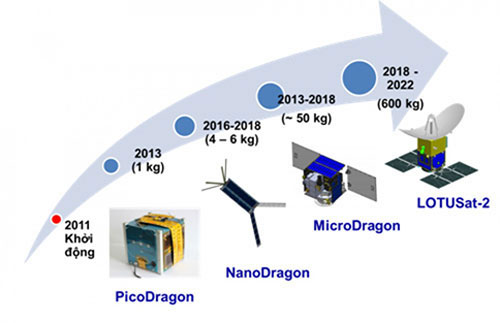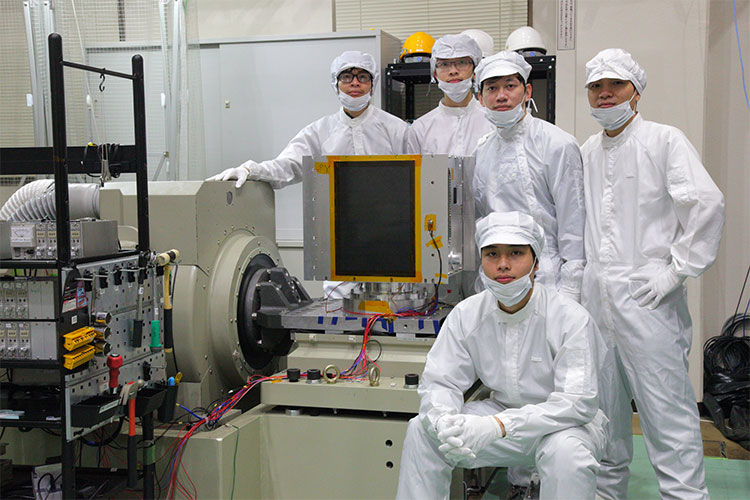Vietnam produces satellites that observe Earth to forecast natural disasters
Vietnamese engineers together with Japanese experts directly produce LOTUSat satellite - 1 in Japan for 36 months.
On the afternoon of October 18, Japan International Cooperation Agency informed that Vietnam and Japan are preparing to produce LOTUSat - 1 radar satellite . Satellite has a high resolution (from 1 to 16m), that is, it is possible to observe images of a detailed object about 1-16 m.
This is part of the component of the project on Natural Disaster Prevention and Climate Change using Earth observation satellites implemented by Vietnam Center.

Vietnam satellite development roadmap.(Photo: VNSC).
LOTUSat - 1 is a satellite using active sensors (radio waves), independent of sunlight sources, providing day and night observation capabilities, doubling the efficiency of observing Earth compared to satellites. use optical sensors (only for daytime shooting). It also has the ability to penetrate, distinguish surface material properties and radio signal reflection.
Dr. Vu Anh Tuan, Deputy General Director of Vietnam Space Center, said that the actual time needed to produce LOTUSat - 1 satellite is 36 months. The time to test and launch into orbit has not been determined because it depends on many factors (usually wait 6 months to a year).

MicroDragon satellite (50kg) under the training program of the Project has been successfully built and is expected to be launched at the end of 2018. (Photo: VNSC).
Tuan said the satellite production will be accelerated to serve for disaster forecasting. It is expected that when application will reduce 10% damage due to natural disasters affecting the Vietnamese economy.
Currently want to take pictures of a certain area Vietnam must order, then at least two days to receive results. But there are separate Earth observation satellites, everything will be completed within 6-12 hours.
To accomplish this goal, from design, assembly and testing, all Vietnamese students and engineers perform in Japan. There have been 36 young Vietnamese researchers and engineers sent to 5 Japanese universities to study the master's program in aerospace technology and practice the production of satellites of 50 kg size. launched in December.
Vietnam has launched into Vinasat 1 (April 2008) and Vinasat 2 (launched in May 2012). These are two telecommunications satellites that are responsible for transmitting and relaying.
VNRedSat 1 (launched in May 2013) is Vietnam 's observing optical satellite, which oversees Vietnam's natural, environmental and natural disasters.
- The most severe places of natural disasters on Earth (Part 1)
- Vietnam is about to build a nearly 600kg satellite
- Vietnam will produce satellites in 2022
- The most severe places of natural disasters on Earth (Part 2)
- Launching many satellites
- Vietnam satellite will enter space in 2018
- 2014: Vietnam will launch satellite remote sensing
- New method to forecast tsunamis
- Japan: The country suffers from many natural disasters and the way to protect people makes the whole world admired
- Vietnam is among the 10 countries most affected by natural disasters
- Vietnam climate is becoming abnormal
- 2012: Many natural disasters, no disasters
 Van Allen's belt and evidence that the Apollo 11 mission to the Moon was myth
Van Allen's belt and evidence that the Apollo 11 mission to the Moon was myth The levels of civilization in the universe (Kardashev scale)
The levels of civilization in the universe (Kardashev scale) Today Mars, the sun and the Earth are aligned
Today Mars, the sun and the Earth are aligned The Amazon owner announced a secret plan to build a space base for thousands of people
The Amazon owner announced a secret plan to build a space base for thousands of people